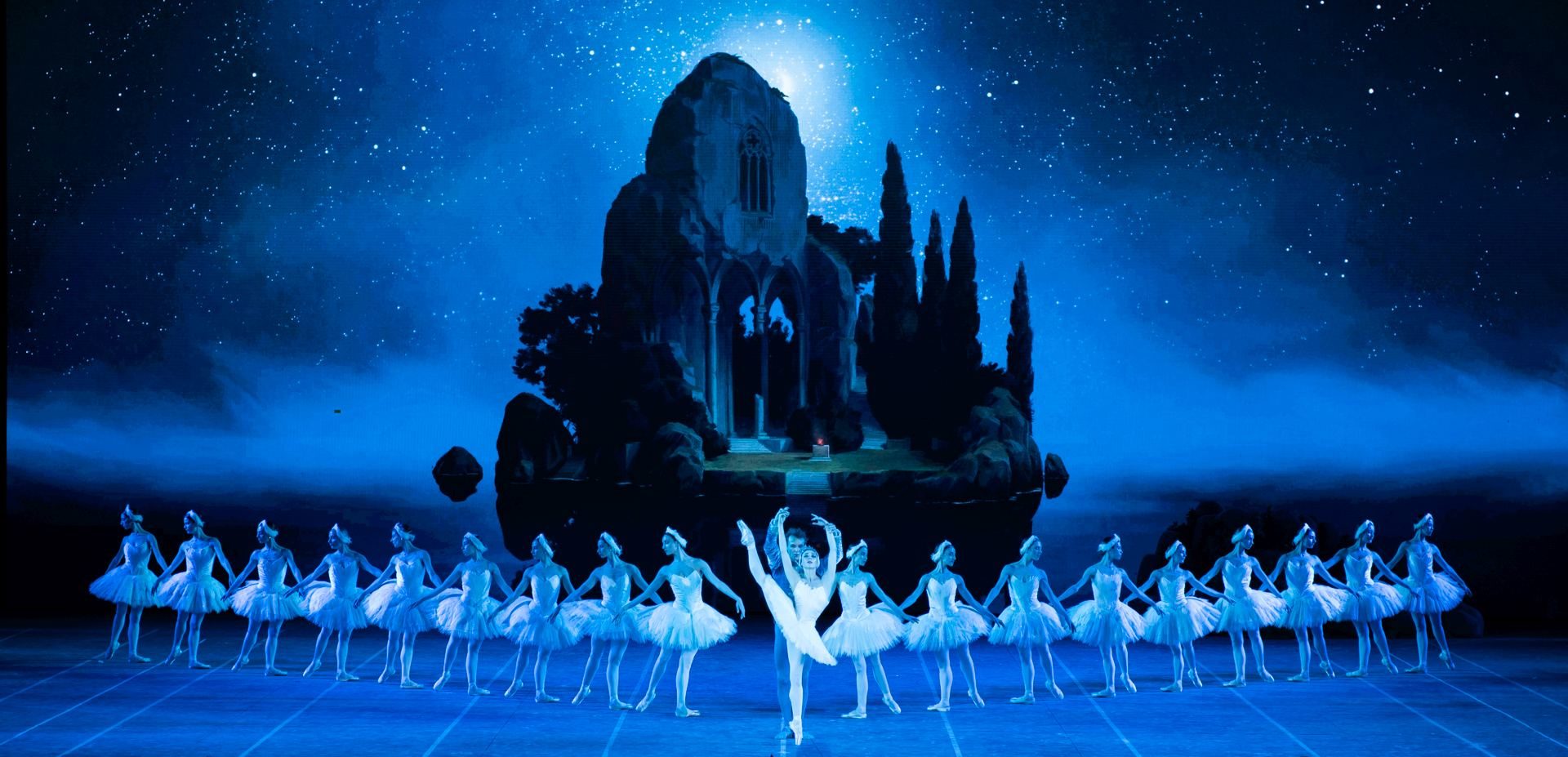Absurd
“Liebeslieder” (“Other Dances” / “Concerto” / “Liebeslieder Walzer”)
Vienna State Ballet
Vienna State Opera
Vienna, Austria
January 14, 2022 (livestream)
by Ilona Landgraf
Copyright © 2022 by Ilona Landgraf

 The Vienna State Ballet’s new triple bill is an all-American one, combining works from staple choreographers (Robbins and Balanchine) with a short piece by Lucinda Childs, whose name is less familiar in Europe.
The Vienna State Ballet’s new triple bill is an all-American one, combining works from staple choreographers (Robbins and Balanchine) with a short piece by Lucinda Childs, whose name is less familiar in Europe.
Robbins’s “Other Dances”, a pas de deux set to one waltz and four mazurkas by Chopin, was tailor-made for Natalia Makarova and Mikhail Baryshnikov in 1976. In Vienna, Hyo-Jung Kang and Davide Dato brought folksy playfulness to their roles as the carefree, happy-go-lucky couple. Their encounter is as lighthearted and upbeat as the light blue backdrop and the sheer blue fabric of Kang’s dress suggest (costumes by Santo Loquasto). After swaggering about with macho energy in a solo, Dato attends to Kang’s every step with buttery care. (more…)


